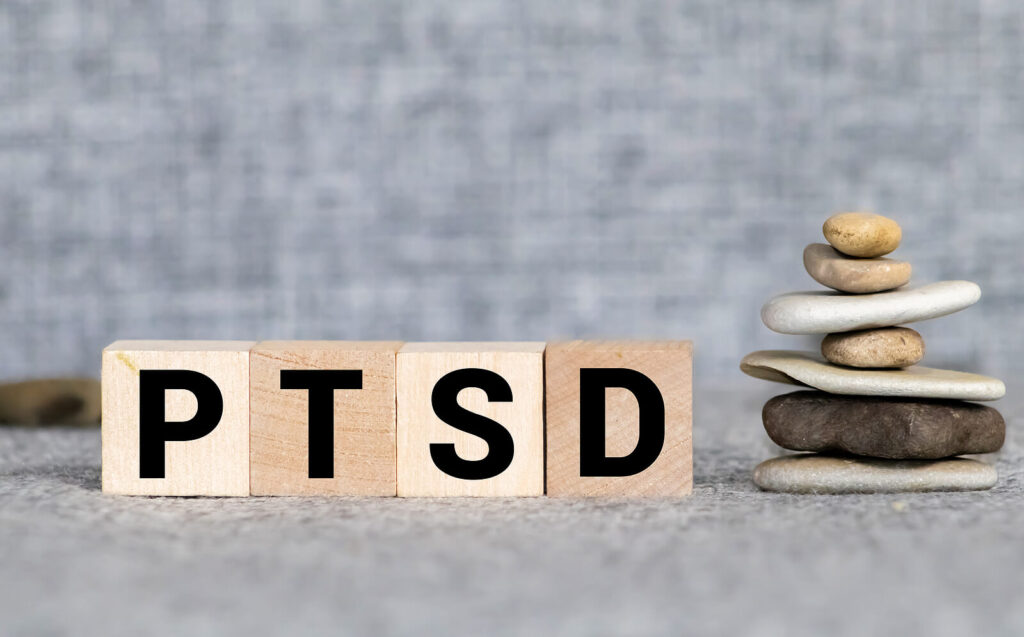Here is the thing, there are a lot of therapists and people in the general population that don’t realize how prevalent trauma is to this day. The truth is even therapists struggle with trauma. They must find space for themselves to begin to work through issues like phobias, anxiety, nightmares, and more. Sometimes people will try to talk themselves out of recognizing trauma because “ this is who I’ve always been”. However, finding the right trauma therapist who is not just trauma-informed but can help you understand how you got here is a great way to understand the connection between childhood trauma and who you are now.
Many individuals who are dealing with trauma and have seen a trauma therapist for some time may be wondering what is wrong with them when they struggle to overcome their traumas. I mean they are doing the work and trying to understand what is happening. However, when they hear a message from others that they should be better by now, they may start to internalize the idea that something is wrong with them. It’s heartbreaking because as a therapist it is exhausting for individuals to be reintroduced to their trauma over and over again. Only to not see the results they hoped for. It can feel hopeless and demoralizing for these individuals who cannot seem to organize the huge range of symptoms they’ve struggled with.
Individuals Need Empowerment to Begin Healing

When an individual gets into trauma therapy and things finally start to click for them, they begin to experience hope and empowerment. Rather than the cyclone of emotions that have held you back. What individuals need is psychoeducation about trauma. An understanding of how it works, and then some perspective to begin some deep healing. The message from trauma therapy isn’t about your character or weakness. Instead, it is an understanding of what happened to you. It’s about what has happened within you. We need to acknowledge your reactions because there wasn’t a sense of protection, instead, there was neglect and deprivation. This can leave a heavy wound on you.
It’s important to know that for childhood trauma survivors, individuals who have experienced sexual abuse, physical abuse, or emotional neglect, it can take time to find the right fit in a trauma therapist or treatment modality. Some individuals do not talk about the intersection of trauma and neuroscience. However, when you are able to understand the connection, that is when doing trauma work can be so impactful and healing.
How do I know Which Treatment Model is Right for Me?
Many therapists are what we call integrationists. Therapists are trained in a variety of ways and models to understand their own theoretical orientation. It is important for a therapist is to be trained and well-supervised in models so they can be impactful with clients. Allowing them to identify which form of trauma therapy is right for each person. Letting them know which therapy such as somatic experiencing, CPT, EMDR, or other forms of trauma therapy will be useful not cause harm. What is important to know about being an integrative therapist is that we have a ton of resources in our toolbox to support individuals. What this allows us to do is create an individualized strategy for healing with our clients. We do not try to fit you into a box to “heal”. Rather we understand you and fit that to the modality that connects best with you.
In order to connect with clients, we have to understand the Complex PTSD dissociation connection
One thing many trauma therapists would agree on is that in order to work with trauma survivors, we need to begin to understand Complex PTSD dissociation in every dimension. This isn’t often taught in a young counselor’s career. In fact, it’s relatively impossible to work with a client who has been significantly traumatized, without encouraging dissociation.
Understanding the Spectrum of Dissociation
It’s necessary for trauma therapists to evaluate the range of Complex PTSD dissociation symptoms that a client is experiencing. What we need to understand with therapies such as EMDR therapy, is that moving into trauma processing or trauma-focused work too early can actually make things much worse. So you want to be sure that you’ve assessed and addressed someone’s level of dissociation prior, to beginning the work.
We can think about trauma and Complex PTSD dissociation on a continuum from the kind of non-pathological dissociation. That is something we can all relate to that. This is what we call absorption or highway hypnosis. Zoning out is one’s exit. By doing this, individuals don’t remember the points between A and B. Then before you know, it, it’s four and you don’t remember what has happened even your peak performance. It’s very much like peak performance or meditation, where the world falls apart.
Understand Complex PTSD Dissociation and Personality Disorders
Then, we move down that continuum into PTSD. We move into certain personality disorders. Such as borderline personality disorder, complex PTSD, OSDD (DDNOS), and not otherwise specified disorders. Then eventually at the far end of the continuum, we’ve got dissociative identity disorder. Therefore, when we consider dissociation it is non-pathological when it’s minor or mild. While it’s considered more, quote pathological when it’s more extreme or debilitating in the present.
There’s a theory called the theory of structural dissociation. It is really critical that people treating trauma survivors, and people doing psychotherapy learn about it. This model doesn’t think about dissociation on a continuum. Rather in terms of degrees of structural dissociation and the personality. The degree of division in the personality where trauma leaves someone to disconnect from parts of their personality, from parts of their experience. When you start seeing these divisions between the parts of self that operate in day-to-day life and adult functional life and the parts of the personality that are connected, to the trauma, to the responses, the defensive responses to trauma, like fight or flight or submit. So there are different ways to think about that continuum or different ways to think about the different levels of dissociation. There’s clearly a range of presentations that come with Complex PTSD dissociation.
How do You Identify Dissociation in a High Functioning Individual?
Dissociation can be very subtle. It takes a skilled and educated clinician to pick up on the factors at play. The objective of dissociation is to keep things hidden. So most folks that come in who have a significant, more complex dissociative disorder, it is not apparent and they’re going to do everything in their power to try to keep you from knowing, you know, and there are parts of the person that might keep themselves from knowing that they have a dissociative disorder or they’re experiencing dissociation.
What should Therapists Look Out For?
There are many different ways to assess the disassociation, taking a good trauma and bio-psycho-social history and observing the client in sessions. Just listening and looking for signs and symptoms and as. It’s not necessarily obvious. It can be quite subtle. And you may not learn about those symptoms unless you ask the client directly about them. Trauma therapists may pay attention when someone has a chronic trauma history when there’s a discrepancy between their history, the history that they’re presenting, and their presentation.
So they’re looking a little more dissociative or they’ve got lots of self-injurious behaviors. They’ve got an addiction, they’ve got a complex clinical picture and they’re saying they had a wonderful childhood or they’re denying that there was any trauma. Be very careful looking at this because folks may have amnesia for their early trauma history. They may be reluctant to share it. There may be a voice in their head. Very punishing and threatening. “Like don’t, you dare mention this or that”. So, as a therapist pay close attention to whether they report that history or if they don’t and it feels like there’s something missing.
Check in on Clients & Their Memory
A clinician may perhaps ask clients whether they hear any voices inside their heads. I always reassure them I’m not asking this question because I think they’re crazy. Or because they have a major mental illness. I share that it’s not uncommon that when you have a significant trauma history, it’s not uncommon to hear voices often, you know, being critical often urging action, urging you to do something bearing, bearing down on you. So our goal is to help reassure So be sure to ask about time loss, Blank spells. Ask people whether they’re told by other people about things that they’ve said or done, and they might not remember.

I always asked from week to week, whether clients remember what happened in the last session, you know, do you remember that we talked about this or that. As a client do you remember that we did this or that? I ask about depersonalization and derealization have they had experiences of feeling foggy, feeling like they’re in a dream, feeling like there are robotic just going through the motions, feeling like they’re out of their body. Looking down on themselves. I ask about whether they have, you know, in the, in the dissociative literature it’s talked about as quote made feelings or behaviors made, meaning like the devil made me do it.
Additional Signs to Look for with Complex PTSD Dissociation
- Passive influence ( I felt like it was happening to me)
- Looking for discrepancies between voice, appearance, affect, and behavior
- Check for client engagement in session when there is little progress
- Listen for the use of “we” in the third person, which could indicate a more complex dissociative disorder.
- Check for dismembered behavior, where they did something, but they don’t recall
- Check for the previous diagnosis such as anxiety, depression, bipolar disorder, schizoaffective disorder, or eating disorders.
Additional Tools for Assessment
- Mental Status Exam for Dissociation
- Dissociative Experiences Scale
- DES1 and DES2
- DDIS Dissociative Disorders Interview Schedule
- Multi-dimensional inventory for Dissociation
- Summative Form Disscoaition Questionnaire
- SCID-D Structured Clinical Interview for Diagnoses
How Can EMDR Therapy Tap Into Dissociative Experiences and Memories
So many of the memories that people have are related to symptoms or difficulties that they’re having or what we would call implicit memories where there’s not yet a narrative. They might not have the words. Sometimes, they might not even have a consciousness that something bad happened, or they might have a felt sense that something bad happened. They may have a sense that certain situations trigger a reaction of fear inside or the urge to flee, but they don’t know what’s been activated that can put words on it.
In EMDR, when the client can identify a memory with some specificity, then we go right to that memory. When we know they’re having nightmares related to a specific event or flashbacks related to a specific event, or they’re getting triggered because of what happened to them. Then we float back from that specific experience in the present to when they first experienced something similar. Then that becomes the focus of our work. But often, as I said, clients have these symptoms and they don’t know why, and they attempt to float back to things and they can’t get clarity on what it’s related to. And so we have a couple of choices in EMDR.
Addressing Complex PTSD Dissociation with EMDR Therapy
We can either target the trigger situation, or have them think about the situation, you know, person, place thing, feeling. That triggers the distress. That seems to be activating, accessing something, even if they don’t know what it is. And we begin there and we see what comes and we let the brain bring whatever needs to be brought to the process. Or we might start with, they might be talking about their early experiences. And even though they can’t pinpoint an actual memory, They might start feeling nauseous as they talk about something, or they might get a feeling in the pit of their stomach, or they might become aware that suddenly they feel really frightened. We can simply target that.
Using the Body to Help with Complex PTSD Dissociation

You know, we would understand that as implicit memory, like memory, that doesn’t necessarily have language attached to it or meaning attached to it yet, it doesn’t have that to give it structure, but it’s memory just the same. And so by just trusting. The brain and the body are going to offer up what needs to get addressed. We begin there and over the course of EMDR processing sessions, often the pieces of the puzzle, right? The components of the experience, are the feelings, the sensations, the cognitions, the sensory.
Components like the imagery or the smells or the sounds, all of that come together. It gets stitched together in the course of the processing work. Somehow the client comes to a greater understanding of what may have happened, what might have happened. There’s no such thing as absolute truth, right? Memory is messy and slippery.However, each and every client are able to arrive at their own personal truth. They do this through the process and collaborative efforts with their theripists. Then it’s up to the client to go and ask questions and gather other information. Then substantiate the picture that they’ve created for themselves of what might’ve happened during those early years.
Takeaways from EMDR Therapy
What is important to recall is that all parts of the person are welcome are invited into therapy because the memories hold the story and the memories hold the meaning. And by bringing attention, bringing skilled attention to the memories in therapy, there’s the potential for healing for tremendous healing. And it’s, you know, rather than just treating the symptoms rather than a top-down approach, where we treat the symptoms, we manage the symptoms. EMDR therapy is about getting at the roots, pulling the weeds up from the roots, changing those roots, transforming those roots. So those symptoms are not going to grow back. Those symptoms are not going to come back and that is so hopeful. The goal is not just learning to manage or control symptoms. Not just gaining insight, but really changing, transforming the way people feel and think and behave. Truly individuals can come into wholeness.
Find a Trauma Therapist Near Me & Address Complex PTSD Dissociation
Complex PTSD dissociation can be hard to understand and handle. One important thing to do is find trauma-informed care. If you are dealing with complex trauma and dissociation it’s time to get support. Talk to a trauma therapist to start getting help. Use our EMDR therapist directory to find a therapist who will guide you.
The first step is understanding that your trauma is real, that it matters, and that you can feel better. Then the hard part comes – trusting a therapist to help you. I know there are many caring and skilled trauma therapists out there who want to help. Find A Trauma Therapist by clicking here.




